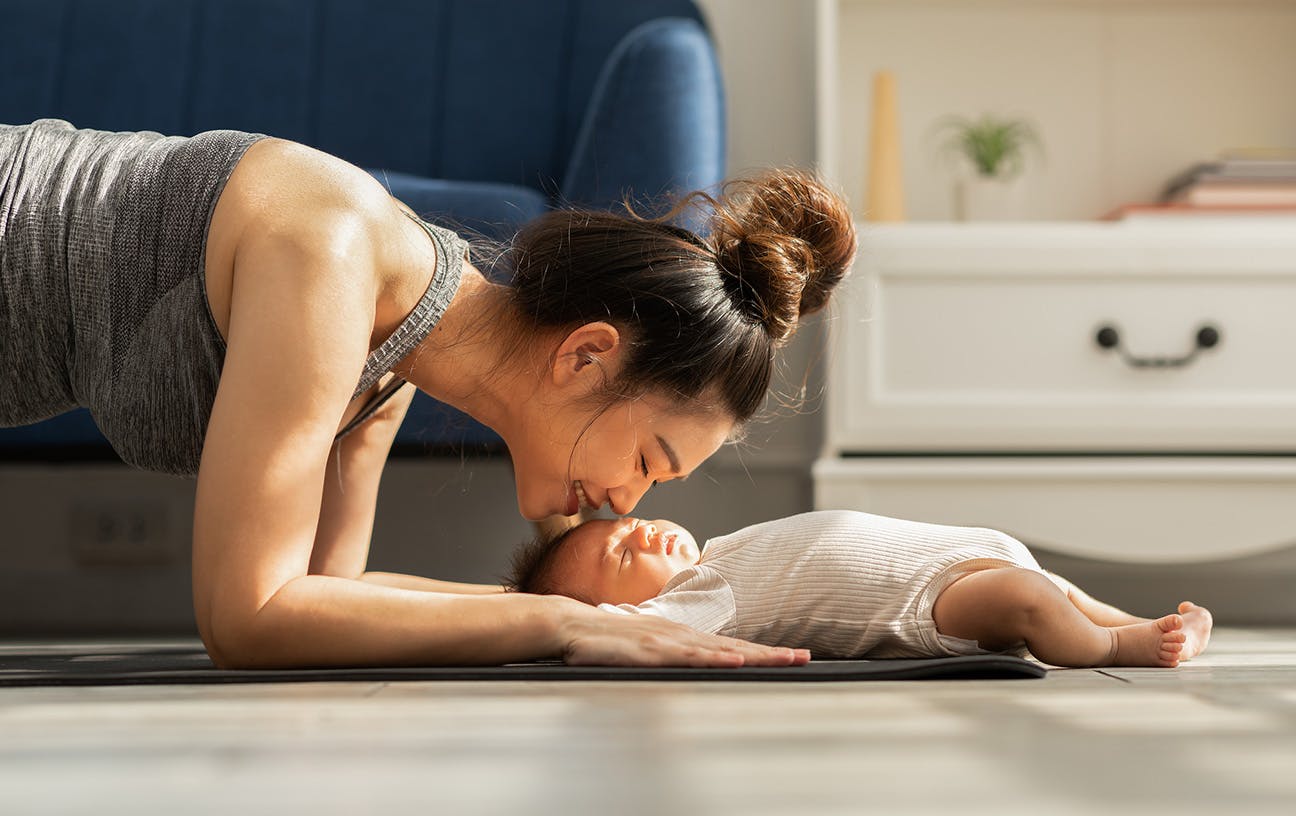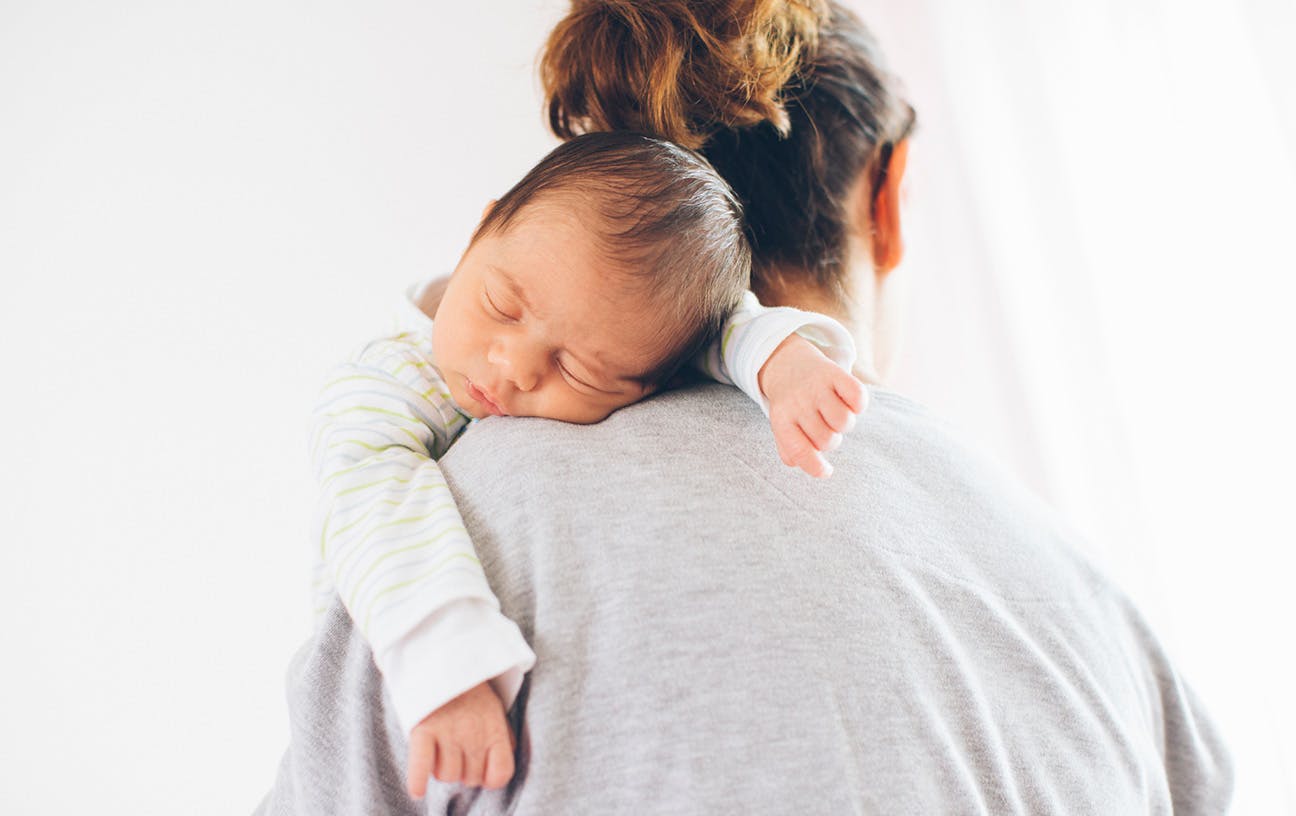0 minute read
Exercise After Giving Birth: What You Need to Know
In this guide, we explain everything you need to know about exercise after giving birth, including how soon after giving birth you can exercise.
Published: March 2022
Origin: Australia
If you’ve just welcomed your little one into the world, it’s likely that your body feels a bit different. Perhaps it feels very different.
Hopefully, your doctor has reassured you that this is normal — your body has been through a lot, after all. Whether you had a caesarean or vaginal birth, you have created new life, and that’s an incredible thing.
It’s normal to want to return to doing the things you loved pre-pregnancy and pre-birth (sushi platters and a glass of red, anyone?)— or not.
However, if you’re keen to get back to the gym, pilates mat, or running track, you’ll need to take a few precautions to make sure you’re doing so safely.
In this guide, we explain everything you need to know about exercise after giving birth. We’ll cover how soon after giving birth you can exercise, as well as what kinds of exercises to begin with.

Can I Start Exercising After Giving Birth?
Whether exercise is the last thing on your mind postpartum or you’ve long been dreaming of your return to physical activity, it’s important to understand how to safely get your body moving after giving birth.
It's important to be gentle with yourself. If you lived a very active lifestyle pre-pregnancy and birth, you may be confronted with the fact that you have less time or energy to exercise.
Go easy on yourself — newborns are hard work! Your body has done an incredible thing, so practise talking to yourself with kindness and compassion, just as you would with a friend.
When you do feel up to it, take some time to move your body slowly and gently. Five to ten minutes is better than nothing at all, so carve out that time where you can give your own body some love and attention.
Adding movement to your daily routine will help you feel re-energised and grounded, and can also aid your physical and emotional recovery.
Exercise may feel different in your body after giving birth, and that’s ok.
Changes to the Body After Giving Birth
You don’t need us to tell you that your body has been through several changes after giving birth — we know you’re feeling them.
Even if you feel great after birth, you’ll need time to recover.
Pregnancy, labour and birth can weaken the pelvic muscles, which is why some people struggle with bladder control after having their baby. This is particularly true for people who have given birth to a large baby, or who had to push for a long time during a long labour.
Pregnancy hormones can also impact the joints and ligaments. These changes may last up to six months postpartum, which can increase your risk of injury.
For some people, pregnancy can also cause the abdominal muscles to separate and it can take time for them to return to normal. Occasionally, the muscles may stay separated, and you will need to do certain exercises to strengthen them again.
How Soon After Giving Birth Can I Exercise?
So, how early can you exercise after giving birth?
No two pregnancies, births or bodies are the same, so it’s important to chat with your doctor about your own individual body and rest requirements.
Generally, for uncomplicated vaginal deliveries, it’s safe to begin gently exercising around two days after giving birth, or as soon as you’re ready.
If you had a caesarean, vaginal tearing or a complicated birth, talk to your health care provider before you exercise again. You will likely need to wait until your six week postnatal checkup before you go back to exercising.
Regardless of your birth experience, chat to your doctor about your post-birth exercise routine. Your doctor will take into consideration how active you were before and during your pregnancy, as well as what your labour was like.
How to Safely Exercise After Giving Birth
It’s important to avoid heavy or strenuous exercise soon after giving birth.
Go gentle and work your way up to more intense exercise. Going too hard too soon can lead to complications and injury (we’ll unpack these a little later).
After giving birth, aim to work up to 150 minutes of mild to moderate intensity exercise per week.
That equates to around 30 minutes a day. You don’t need to complete that 30 minutes all at once; you might like to go for a ten minute walk in the morning, then do ten minutes of light stretching in the afternoon and ten minutes of pelvic floor exercises in the evening.
The key takeaway is that going slow and gentle is the key to exercising safely after giving birth.
Exercises to Do After Giving Birth
Let’s take a look at the best exercises to do after giving birth.
Exercise After Vaginal Birth
After a vaginal birth, it’s best to start with gentle pelvic floor and abdominal exercises. Provided you have the go ahead from your doctor, most people can safely begin these exercises two days after giving birth.
- Pelvic tilt: Lie on your back with your knees bent and feet flat on the ground. Push your back into the floor by tightening abdominal muscles and tilting your pelvis up slightly, as if angling it towards you. Hold for 10 seconds, release and then repeat five more times. Slowly work your way up to 10 repetitions.
- Kegels: Kegels are used to tone the pelvic floor muscles and can help to prevent urinary and anal incontinence. Contract pelvic floor muscles by drawing them up towards your midline, as if you’re stopping a wee midstream. Hold for 10 seconds and release. Aim for three sets of 10 repetitions a day. Note: avoid doing this while urinating.
You shouldn’t feel any pain when completing these exercises. If you do, stop immediately and flag this with your doctor.
You can also get back into exercise post-vaginal birth by going on slow-paced, low-incline walks. Begin with 10 minutes a day and slowly increase the time and pace of your walk as you go.
Gentle yoga stretches on blocks are also a great way to nourish your body with movement after giving birth.
Yoga can help to reduce mental stress and muscle tension, which you may feel in your back or shoulders from holding your baby or pushing a pram around.
When you’re ready to level up, you might like to incorporate some resistance bands into your workouts. This is a good way to work yourself back up to weight training and will stop you from shocking your body when you pick up those dumbbells again.

Exercise After Caesarean
A caesarean is a major operation and it can take at least six weeks to heal.
Most people will be cleared to do pelvic floor exercises around three days after birth, but it’s important to check with your doctor before starting any kind of workout routine.
You might be wondering when you can do ab exercises after giving birth.
If you’ve had a C-section, you’ll need to avoid intense abdominal exercises — such as crunches and sit ups — for at least six weeks after birth.
These kinds of exercises can put pressure on your scar, so you’ll need ample time to heal. In most cases, you’ll need to wait three months before attempting abdominal or intense exercises.
It’s also important not to lift anything heavier than your baby for the first six weeks post-birth. If you need to lift something around the house, use proper lifting technique by engaging your core, bending at the knees and keeping your back straight.
You can slowly build up your exercise routine by cycling, walking and doing low-impact aerobics.
If you feel any pain, discomfort or pulling at your scar, stop immediately and let your doctor know.
The Dangers of Exercising Too Soon After Birth
These warnings may seem overly cautious, but they’re necessary to ensure a complete recovery from birth.
So, what does exercising too soon after birth look like?
If you overdo it too quickly after giving birth, you may experience bladder or bowel leakage, pelvic discomfort, bleeding, pain, injury or infection.
Exercising too soon after a C-section can damage the fascia, which is the connective tissue that wraps around your organs.
Working out with an unhealed fascia may cause a hole to form, which can lead to an incisional hernia.
At best, a hernia results in a bulge in the stomach that causes pain and nausea. At worst, the hernia may become strangled. This requires surgery.
Your uterus, rectus muscles and subcutaneous tissues also need to heal post-birth before you start exercising.
If you’ve had a vaginal delivery, exercising too soon can cause your vaginal laceration stitches to pop. This can cause bleeding and pain, which also puts you at risk of infection.
Before you return to any high-impact exercises, try coughing or jumping on a full bladder. If you leak urine, this signals that your pelvic floor needs more recovery time. Your doctor can give you advice on how to strengthen it.
Remember, while being active is important to our health and well-being, it’s essential to go gently and slowly after giving birth. Going overboard will cause your body harm, which is the absolute opposite of what you’re intending.
Exercise After Giving Birth: Take it Slow
If you’re thinking about getting back into exercise after giving birth, that’s a great thing.
Exercise is vital for all of us throughout our whole lives, but it’s particularly important after childbirth. It helps to relieve mental stress, strengthen your body and get you in a healthy routine.
It also provides you with some much-needed self-care time, where you can take a deep breath and be with yourself for a moment.
Generally, it’s recommended that you begin pelvic floor exercises and slow walking around two days after giving birth. However, this will vary from person to person and it’s essential to be cleared by your doctor before attempting any physical activity post-birth.
When you’re given the all-clear, nourish your body with gentle stretches, yoga, walking and pelvic floor exercises. Go easy on yourself and ensure that your physical exercise is accompanied by compassionate self-talk.
Your mind and body will thank you for it.
Andrea Robertson
Editor
Share